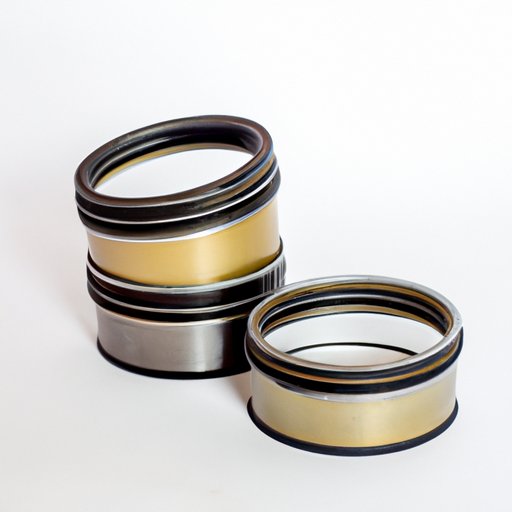Introduction
Piston rings are an integral part of any internal combustion engine. They provide a seal between the piston and the cylinder wall, allowing for efficient compression of the air-fuel mixture in the combustion chamber. Without properly functioning piston rings, your vehicle’s performance and fuel economy will suffer, and it can even cause major damage to the engine.

Identifying the Problem: How to Detect Bad Piston Rings and the Impact on Driving
The most common signs of worn or broken piston rings include excessive oil consumption, poor engine performance, blue exhaust smoke and increased engine noise. If you notice any of these symptoms, then it is likely that your piston rings are damaged and need to be replaced. The impact on your vehicle’s performance will depend on the severity of the damage, but it is likely that you will experience reduced power, lower fuel economy, and a decrease in overall engine efficiency.
The Danger of Driving with Bad Piston Rings
Driving with bad piston rings can potentially cause serious damage to your engine. If the piston rings are too worn or broken, then they won’t be able to create an effective seal between the piston and the cylinder wall. This will result in a loss of compression, which can lead to decreased performance and increased fuel consumption. In extreme cases, it can also cause the piston to seize, leading to catastrophic engine failure.
In addition to the potential damage to your engine, driving with bad piston rings can also increase the risk of accidents. Poor engine performance can make your vehicle harder to control, which can put other drivers at risk. It is therefore important to have your vehicle checked regularly to ensure that all components are in good working order.
How Long Can You Drive with Bad Piston Rings?
The amount of time you can drive with bad piston rings will depend on several factors, including the severity of the damage, the type of engine, and the type of driving conditions. Generally speaking, it is not recommended to drive with bad piston rings for more than a few hundred miles, as this could cause further damage to the engine.
If the damage is minimal, then you may be able to drive for longer distances without causing any significant damage. However, it is still important to have your vehicle checked and repaired as soon as possible to prevent further damage.

The Cost of Replacing Piston Rings
Replacing piston rings can be a costly endeavor, especially if the engine has sustained significant damage. The cost of the parts themselves can range from a few hundred dollars to several thousand, depending on the make and model of the vehicle. Labor costs can also add up quickly, so it is important to get an estimate from a qualified mechanic before committing to any repairs.

Preventative Maintenance Tips for Avoiding Bad Piston Rings
The best way to avoid bad piston rings is to follow a regular maintenance schedule. This includes changing your oil on a regular basis, checking your spark plugs and filters, and inspecting your engine for any signs of wear or damage. Additionally, proper care and handling of your vehicle will help prolong the life of your engine and reduce the risk of piston ring failure.
Conclusion
Bad piston rings can cause a variety of problems for your vehicle, including decreased performance, increased risk of accidents, and potential engine damage. It is important to identify the problem early and have your vehicle repaired as soon as possible. While the cost of replacing piston rings can be expensive, it is far less costly than replacing an entire engine. To avoid bad piston rings, it is important to follow a regular maintenance schedule and take proper care of your vehicle.
(Note: Is this article not meeting your expectations? Do you have knowledge or insights to share? Unlock new opportunities and expand your reach by joining our authors team. Click Registration to join us and share your expertise with our readers.)
